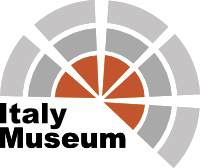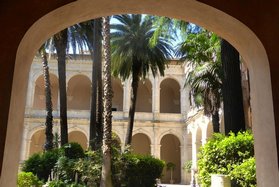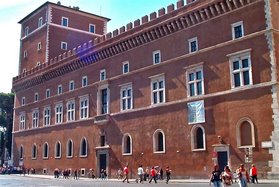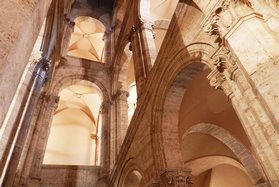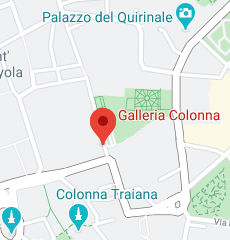Palazzo Venezia
A little history of Palazzo Venezia
Palazzo Barbo or Palazzo Venezia is a palace in Rome located just off Piazza Venezia, built between 1455 and 1467 on behalf of the Venetian Cardinal Pietro Barbo, who later became Pope under the name of Paul II. The travertine of the Colosseum and Teatro di Marcello was used for the construction of this building.
In 1564 Pope Pius IV Medici ceded part of the Palace to the Republic of Venice, where he kept his embassy until 1797, hence its name. After the Napoleonic period (1814-1916), it was the seat of the Austrian-Hungarian diplomatic representation.
The birth of the Venice Palace Museum dates back to 1916 when the building was recovered from Austria to become a significant national museum of medieval and renaissance art.
On September 16, 1929, Mussolini placed his headquarters in the world map room, and in the remaining years of fascism, the light in this room never went out, meaning that the government did not rest.
What is the Palazzo Venezia today?
The Palazzo Venezia is a palace in Rome that is located between Piazza Venezia and Via del Plebiscito, it is a sober Renaissance building where works of art produced between the early years of Christianity and the Renaissance are exhibited.
Currently, Palazzo Venezia houses the National Museum of Palazzo Venezia, the National Institute of Archeology and Art History with the library of Archeology and Art History, also, since December 2014, Palazzo Venezia has become the headquarters of the Polo Museale del Lazio.
The National Museum of Palazzo Venezia mainly displays the collections of Pope Paul II, who was the first inhabitant of this building. You can also admire some pieces from the Sant'Angelo Castle, the Museum of the Roman College, and the National Gallery of Ancient Art. In the corridors of the palace, you will be able to appreciate different elements, such as Renaissance paintings, polychrome wooden sculptures, rugs, weapons, armor, and terracotta sculptures.
Curiosities of the Palazzo Venezia
Did you know that Palazzo Venezia was built in the 15th century as the residence of Cardinal Pietro Barbo and that this Renaissance building was later used as a papal seat and as an embassy of the Republic of Venice?
Did you know that between 1929 and 1943, the Palazzo Venezia was the seat of the Head of Government and the Great Council of Fascism, and from its "historic balcony," Mussolini gave his famous speeches?
Did you know that in the heart of Rome, a few meters from the urban chaos, there is a true oasis of peace, the garden of the Palazzo Venezia open to all for free?
Why visit the Palazzo Venezia?
Palazzo Venezia is a deliberately severe looking building with three rows of windows, battlements on the cornice, and an imposing tower, it has been considered the largest Roman civil work of the 15th century.
Objects from the scattered Kircherian Museum, the National Gallery of Ancient Art, and, above all, the collections gathered at Sant'Angelo Castle for the 1911 International Art Exhibition were brought together here.
During the following years, other prestigious art collections were added. Among the works of art, it is possible to admire the terracotta sculptures by Gianlorenzo Bernini and the National Art Library.
How can I visit the Palazzo Venezia?
The reservation of tickets for this museum can be made comfortably online.
Other attractions in the area
Get to know the squares, fountains, monuments and the most famous attractions of Rome in the best way: walking!
In Piazza Venezia, you will find not only the National Museum of Palazzo Venezia but also the Altar of the Fatherland with the monument to Vittorio Emanuele II. From here, you can get in five minutes to Piazza del Campidoglio, which is located on the Capitoline Hill and is the first square of modern Rome. This square is one of the main tourist attractions in the city because the Capitoline Museums are located here. Between the Palazzo Senatorio and Palazzo Nuovo, you can also see the sculpture of the Capitoline Wolf, the protagonist of the legendary Legend of Romulus and Remus. From Piazza Venezia, you can even walk along Via dei Fori Imperiali, admiring the Roman Forums until you reach the Colosseum, the largest amphitheater built during the Roman Empire and the most impressive monument in Rome.
The entire city of Rome is an open-air museum, and there are many attractions to see and visit, from the Baths of Caracalla, the most exceptional example of imperial baths, to the Vatican Museums and the spectacular Sistine Chapel considered to be Michelangelo's masterpiece.
All of this and much more in a unique and ancient city!
You may be interested in:
Buy Accademia of Florence Tickets, book Secret Itineraries Tour (Venice) or visit the Milan Duomo.
Useful Information
From Tuesday to Sunday from 8.30 am to 7.30 pm
Last admission: 6.30 pm
Closed on: Monday, January 1, May 1 and December 25
Discover the most suggestive museums of Rome:

+39 055713655
Reach the museums in total comfort with our transfer service!
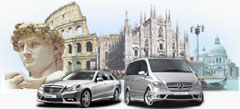
TRANSFER SERVICE
book now
